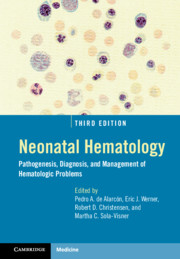Book contents
- Neonatal Hematology
- Neonatal Hematology
- Copyright page
- Contents
- Foreword
- Preface
- Contributors
- Section I Developmental Hematology
- Chapter 1 A Historical Review
- Chapter 2 Hematopoiesis
- Chapter 3 The Development of the Human Immune System
- Section II Bone Marrow Failure and Immune Disorders
- Section III Erythrocyte Disorders
- Section IV Platelet Disorders
- Section V Leucocyte Disorders
- Section VI Hemostatic Disorders
- Section VII Neonatal Transfusion Medicine
- Section VIII Neonatal Oncology
- Section IX Miscellaneous
- Index
- Plate Section (PDF Only)
- References
Chapter 1 - A Historical Review
from Section I - Developmental Hematology
Published online by Cambridge University Press: 30 January 2021
- Neonatal Hematology
- Neonatal Hematology
- Copyright page
- Contents
- Foreword
- Preface
- Contributors
- Section I Developmental Hematology
- Chapter 1 A Historical Review
- Chapter 2 Hematopoiesis
- Chapter 3 The Development of the Human Immune System
- Section II Bone Marrow Failure and Immune Disorders
- Section III Erythrocyte Disorders
- Section IV Platelet Disorders
- Section V Leucocyte Disorders
- Section VI Hemostatic Disorders
- Section VII Neonatal Transfusion Medicine
- Section VIII Neonatal Oncology
- Section IX Miscellaneous
- Index
- Plate Section (PDF Only)
- References
Summary
Ancient concepts of the blood were described by Hippocrates and Galen 2000 years ago in their doctrine of “humors.” It was believed that the body was made up of four humors – blood, phlegm, black bile, and yellow bile – and that these four components had the qualities of heat (hot-blooded!), cold, moist, and dry. The Galenic concept of the blood prevailed through the Middle Ages. Health or disease were a result of an imbalance, between these humors. This was the basis of the practice of therapeutic bloodletting (which, fortunately, was performed infrequently on children) through the mid nineteenth century as a way to rid the body of the imbalance of humors believed to cause a wide variety of diseases.
- Type
- Chapter
- Information
- Neonatal HematologyPathogenesis, Diagnosis, and Management of Hematologic Problems, pp. 1 - 9Publisher: Cambridge University PressPrint publication year: 2021

